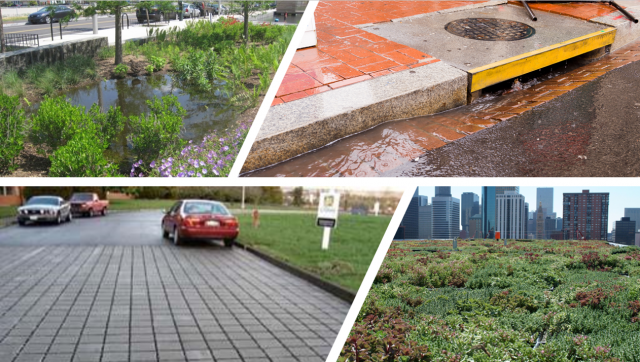Green and Gray Infrastructure Research

Optimizing stormwater management requires the use of both existing gray infrastructure and green infrastructure. Gray infrastructure is traditional stormwater infrastructure in the built environment such as gutters, drains, pipes, and retention basins. Green infrastructure mimics nature and captures rainwater where it falls, and includes permeable pavement, rain gardens, bioretention cells (or bioswales), vegetative swales, infiltration trenches, green roofs, planter boxes, rainwater harvesting (rain barrels or cisterns), rooftop (downspout) disconnection, and urban tree canopies.
EPA’s green and gray infrastructure research involves synthesizing existing models, methods, assessment data, and approaches (e.g., flow control) to aid communities in stormwater management planning, including evaluation of costs and benefits, operation, and green/gray infrastructure maintenance issues. The research integrates and accounts for system hydraulics and interactions with other hydrologic processes in the stormwater/wastewater collection, conveyance, and combined/septic sewer overflow-outfall system.
Related Research
- Stormwater Management Research
- Enhanced Aquifer Recharge Research
- Urban Soils, Ecosystem Services, and the Application of Green Infrastructure Practices
- Stormwater Management as a Resource for Enhanced Recharge, Capture, and Use
Models and Tools
Publications
- EPA Research Publications about Green and Gray Infrastructure
- Green Infrastructure Research at EPA Brochure (pdf)
Additional Resources
Basics, Planning, and Partnerships
Sustainable Communities
- Improving Community Resiliency with Green Infrastructure (pdf)
- Healthy Benefits of Green Infrastructure in Communities Fact Sheet (pdf)
- Lick Run: Green Infrastructure in Cincinnati and Beyond
- Using Economic Incentives to Manage Stormwater Runoff in the Shepherd Creek Watershed, Part I
- Urban Street Trees and Green Infrastructure
- Community Solutions for Voluntary Long-Term Stormwater Planning
